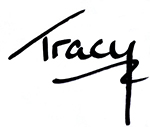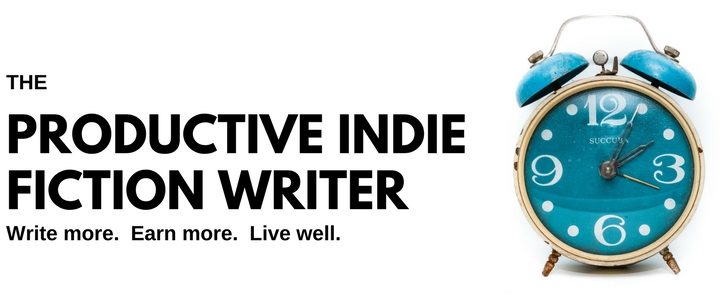SAAS and your wallet – and alternatives

Don’t Let This Convenience Suck Up Your Revenue
I fell for this with a loud bang when it first came out. It’s an attractive, easy option that looks ever so pretty, but when you sit down and do the math…wow!
What is this seductive beauty?
Software-as-a-Service, or SaaS.
SaaS has been around for quite a while, surprisingly. The first software offered as a service was Saleforce’s CRM software, which was released in 1999. But SaaS has really taken off in the last ten years or so.
As I said, I fell for the allure of really good applications at cheap prices.
The first I signed up for was Microsoft’s Office 365. The suite of programs run my business and I’d be lost without them. In particular, Microsoft Word is the lingua franca of publishing. Editors want manuscripts in Word. Most ePub and Mobi compilers only let you import Word files. Desktop Publishing applications also import Word files, and not much else.
Office 365 has an annual fee that isn’t onerous…plus I did the math. Given how often I had to buy the upgraded version of Office, when it came in a big box with CDs inside, even paying the annual fee for Office saves me money now. And I always have the latest version.
But SaaS isn’t always a good thing.
Well, it’s a very good thing when you’re sitting on the other side of the offering. Hundreds of people paying monthly instalments? That would fix a company’s cash flow issues immediately. Plus, that monthly dump of cash is endless.
It’s no small wonder that business are scrambling to switch their applications to services with monthly fees as soon as possible.
It also looks very attractive to users. I remember almost swooning when Adobe offered Photoshop as a SaaS. Finally, I could get rid of clunky GIMP and use the proper software that everyone seemed to have but me.
Ditto, Adobe Acrobat pro.
And now, most recently, nearly every AI tool that has been suddenly rushed to market is also a SaaS, with “a small monthly fee”.
The problem with any of them is that those monthly fees add up. If you calculate them out over the time you expect to use them (which is usually in years), the bottom line reveals that you’re paying far, far more for the applications than you would if they were a one time license. You just don’t notice that when you’re looking at the tiny monthly amount.
In addition, each time you add yet another SaaS to your toolkit, your “small monthly amounts” are adding up to a gi-normous overall amount!
And these SaaSs are everywhere. Many of the plugins you use for WordPress, for example, are monthly or annual subscriptions.
Here’s a quick example of the tools that the average indie (me) uses, that come with monthly commitments:
| Software | Monthly Fee/Annual split (USD) |
| Microsoft Office | 4.86 |
| Adobe Photoshop | 35.99 |
| Adobe Acrobat Pro | 23.99 |
| Stock photo site | 8.25 |
| Various WordPress plugins (annual fees) | 27.30 |
| Task manager pro (teams) | 9.11 |
| Adobe sign/PDF signature apps | 19.99 |
| Desktop Publishing software | 35.99 |
| Accounting software | 22.00 |
| Editing software | 10.00 |
| TOTAL | $197.48 |
| TOTAL FOR THE YEAR | $2,369.76 |
I kept this conservative. It’s just software. There are plenty of other “small monthly fee” services that hold out their hand for indie authors’ money, including some distributors (PublishDrive), online commerce (Shopify) and , of course, website hosting services, registration for your author domain and more.
Add those to the bottom line and that’s a lot of monthly expenses walking out the door.
Especially now when indie publishing is rocky from over-saturation and everyone is wondering what the hell is going to happen now AI-written books are a thing (along with AI covers and more), thriftiness and hanging onto your dollars just makes sense.
Nearly everything in the list, above, can be replaced by a one-time license alternative. Even Microsoft Office can be replaced by Office Libre, or Open Office, both of which are totally free.
Some of the WordPress plugins can be replaced by free versions that do the same thing, or downgraded to the free (but either limited or branded or comes with advertising) editions of the pro versions.
I got rid of all my Adobe products and replaced them with Affinity Suite, which includes Affinity Photo (which in some ways is even better than Photoshop, and handles PSD files just as well), Affinity Publisher (Desktop publishing software to build my print editions, which replaces InDesign and does a great job), and Affinity Illustrator (which is a replacement for Adobe Illustrator, which I didn’t subscribe to…but now I have Affinity’s version, I will roll up my sleeves and figure out what it’s good for). I bought the suite at 60% off, when it first launched.
Adobe Sign I haven’t found a replacement for, but Adobe Reader (which is free) has a signature tool in it which lets me electronically sign documents, so for now I’m good, as I’m not editing anthologies anymore.
I use Microsoft Word’s internal editor for spell checking, and when the AI component is rolled out later this year, the editor will be even better.
Each time an annual renewal pops up, I do a bit of research and figure out if there is a one-time license equivalent, and if they’re worth it. If the alternatives will do the job, I’ll switch.
But some SaaS programs I won’t swap out. Microsoft 365 is one of them. I use every program in the suite, heavily, every day. Although Libre Office is supposed to be brilliant, I’m wary that the text editor won’t have the functionality that Word does, and I write everything in Word and I’m used to it, including keyboard shortcuts and editing shortcuts.
Ditto with Excel.
And none of the free office suits come with an email program like Outlook, which stops me cold, because I’ve yet to find an email application that works as well as Outlook.
You may have noticed that there was no ebook compiling software on the list. That’s because every good ebook compiler out there (Jutoh, Atticus, Vellum) is a one-time license application.
In my zeal to get rid of monthly fees, I may one day decide to make the jump, but I’ll have to experiment first.
My point is; Analyze how much you’re spending on monthly and annual fees for software that could be easily replaced with one-time license applications. You may find, like I did, that you can save a hefty amount per month that could be put to better use…or stash it for months when the sales just aren’t there.

